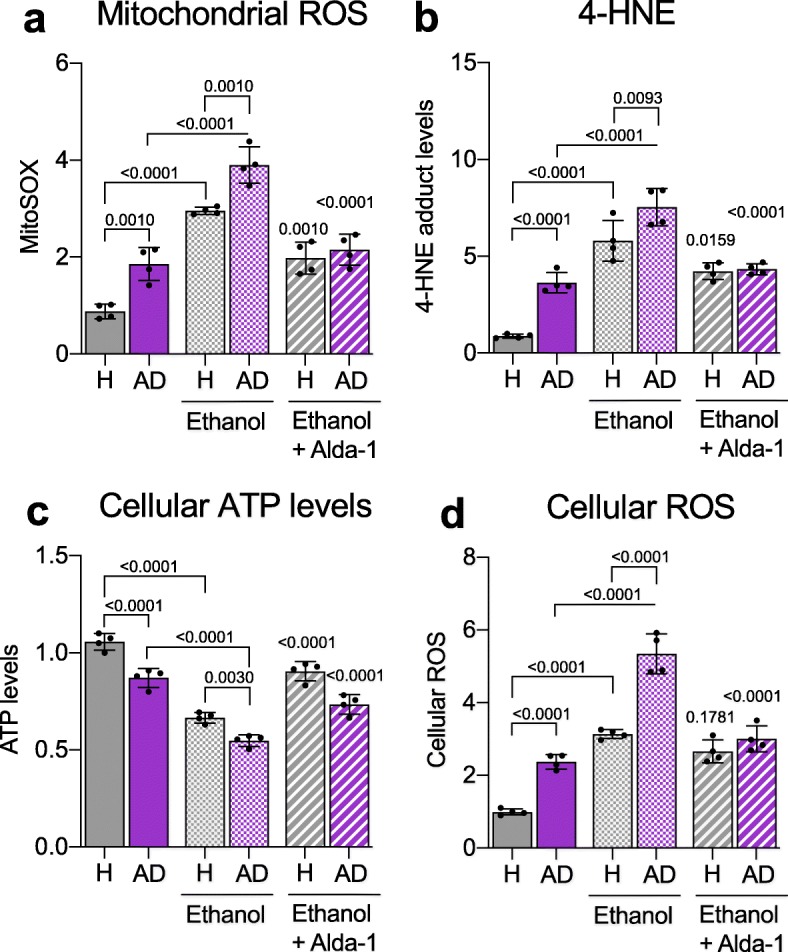Fig. 2.

Ethanol increases metabolic dysfunction of Alzheimer’s disease (AD) patient-derived fibroblasts that is rescued by ALDH2 activation. a) Measurement of mitochondrial ROS using MitoSOX™ in 4 control (healthy subject; H)- and 4 AD patient-derived fibroblasts in the presence or absence of Alda-1 (20 μM/48 h) and ethanol (50 mM). Each data point represents an average of 3 independent biological replicates from individual lines. b) 4-HNE levels were measured using 4-HNE Assay Kit in control (healthy subject; H)- and AD patient-derived fibroblasts in the presence or absence of Alda-1 (20 μM/48 h) and ethanol (50 mM). Each data point represents an average of 3 independent biological replicates from individual lines. c) Cellular ATP levels were analyzed using CellTiter-Glo Luminescent Cell Viability kit in control (healthy subject; H)- and AD patient-derived fibroblasts in the presence or absence of Alda-1 (20 μM/36 h) and ethanol (50 mM). Each data point represents an average of 3 independent biological replicates from individual lines. d) Cellular ROS production was measured using 2,7 dichloro-fluorescein diacetate (DCFDA) in control (healthy subject; H) and AD patient-derived fibroblasts in the presence or absence of Alda-1 (20 μM/48 h) and ethanol (50 mM). Each data point represents an average of 3 independent biological replicates from individual lines. Data information: Mean, standard deviation, and p-values are shown. Results are presented as percent/fold of control. n = 3 independent biological replicates; probability by one-way ANOVA (with Holm-Sidak post hoc test)
